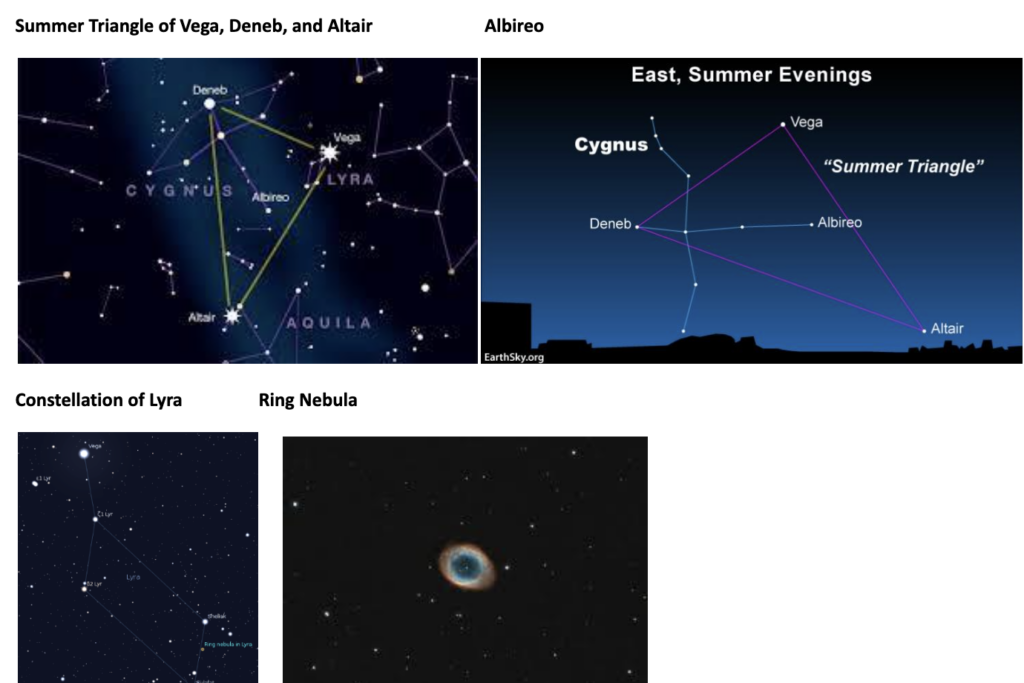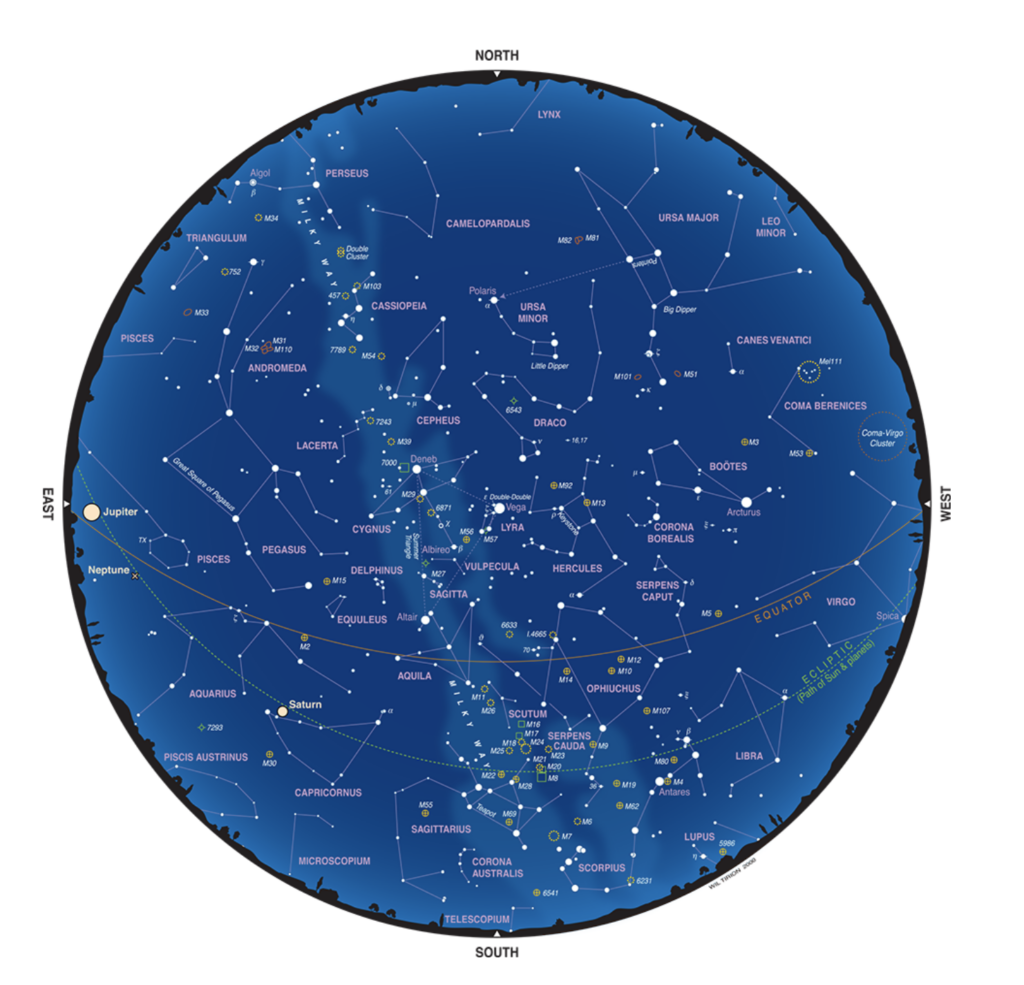By Astronomer Jim Higgs
The big deal in the sky for the month of August is the Perseid meteor shower! And it’s maximum typically occurs the night of August 11th every year. Meteors are best seen after midnight, but for Blue Spruce Campers on August 11th, we saw an occasional bright meteor that night! There have been a few meteors at camp this year.
In The Evening Sky:
- All month, the “Summer Triangle” of three bright stars will be clearly visible in the southern sky. Vega is near “the top” (the zenith) of the sky and is the most brilliant. Off to the left will be the bright star Deneb and the most southern is the bright star Altair. You can find all three on the below star chart.
- Anchored by bright Vega, we have the constellation Lyra, shaped like a rhombus. Can you find Lyra? See the below photo and star chart. Between the two stars in the bottom of Lyra’s rhombus is the “Ring Nebula.” Hopefully, we’ll be able to see the dim ring nebula with telescopes at Blue Spruce, but the bright moon may prevent that.
- One of the fun “binary stars” to see in the sky is Albireo, in the constellation of Cygnus. Albireo looks like a very normal, not very bright star with a naked eye. But through a telescope, you can see that Albireo is really two stars, one that is yellow and the other one is blue!

In The Morning Sky:
- Throughout the month, Venus is still the brightest non-moon object in the sky, serving as the “morning star.”
- On August 15th, the waning (decreasing in phase size) moon was very close to brilliant Jupiter in the morning sky.
Star Chart for August, from Orion Telescopes website:

